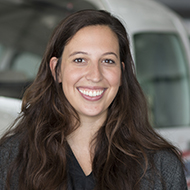Iditarod's air support
Volunteer pilots serve 'The Last Great Race'
This March marked the running of the fifty-second Iditarod Trail Sled Dog Race, crossing nearly 1,000 miles of Alaska wilderness in little more than a week. While each team races alone, a volunteer squadron provides air support in Cessna Skywagons.
With the ceremonial start in downtown Anchorage on March 2, followed by the official restart in Willow the following day, reaching Nome pushed the most competitive mushers and their teams to their physical limits. (Dallas Seavey won his record sixth Iditarod, overcoming a two-hour penalty for improperly gutting a moose that attacked his team to finish in 9 days, 2 hours, 16 minutes, 8 seconds.)
The all-volunteer group of over 20 pilots and their airplanes, plus ground-based support staff, fly a variety of supplies, veterinarians, and race officials to and from the mandatory checkpoints along the route. They deliver everything from food and drop bags for racers and their teams to fuel for snowmachines breaking the Iditarod trail ahead of the sleds. The volunteer veterinarians are often from around the world, excited to help support the Iditarod and check and tend to the dog teams throughout the race. Most of the airplanes in the fleet are Cessna 180 or 185 Skywagons operated on hydraulic skis. By the end of the race, the group will have flown close to 1,000 hours. Each pilot, most of whom are ATPs, averages 50 to 70 hours, and about 200 of the total hours were flown before the race putting supplies and people in position.

Click images in the gallery to enlarge and view captions.






The flying really ramps up after the official restart. During the race, the IAF, which operates under a unique FAA exemption and follows a hybrid of FAR Part 91 and Part 135 guidelines, uses a hub-and-spoke model to better support the race. The operation comprises not just pilots flying their airplanes; dispatchers, load coordinators, and other support staff deploy to one of three locations. For the earliest checkpoints, IAF dispatches its fleet out of the Lakefront Hotel in Anchorage (the official hotel of the Iditarod). From there, it uses McGrath Airport and then Unalakleet Airport as hubs. And the work isn’t over once the race is done—the IAF also hauls out everything and everyone it flies in.
Unsurprisingly, the volunteer aviators' biggest challenge is contending with Alaska’s winter weather. As teams approached the McGrath checkpoint at mile 311, a few bad weather days of perfect whiteout conditions with blowing snow cutting visibility down to the hundreds, and ice, put the day-VFR-only team slightly behind schedule. But the weather’s always changing, and with a break in the clouds and snow, the team made up for lost time before the first mushers arrived.
Mackenzie Fischer, load coordinator in McGrath, sent out 17 flights that afternoon. Mackenzie’s dad, Greg, a longtime IAF volunteer, was assigned to fly to nearby Nikolai in his Skywagon. Mackenzie is a pilot too, although the Super Cub she flies is not quite as suited to hauling people, dogs, and gear as the rest of the fleet.
In McGrath’s dispatch room (fondly labeled the “Iditaroom”), assistant chief pilot Diana Moroney said, “There’s something about Iditarod that once you start running it or volunteering for it you get sucked in for life it seems. And that’s really true.”
She has a unique perspective as an experienced backcountry pilot, a retired Boeing 747 pilot for Atlas Air, and a dog musher who ran the Iditarod 10 times between 1984 and 2005. Her husband Bruce also ran the race twice. They both fly their Skywagon in support of the race, although Diana, as McGrath’s assistant chief pilot, flies less than Bruce, who a few days into the race had already flown nearly 40 hours.
Iditarod in one way or another, said Moroney, “has been our life—my life—since ‘83. The flying is just so much fun. It’s great to fly the trail.”
The race follows the Iditarod National Historic Trail. Learn more about "The Last Great Race," and the air force that supports it, online.












